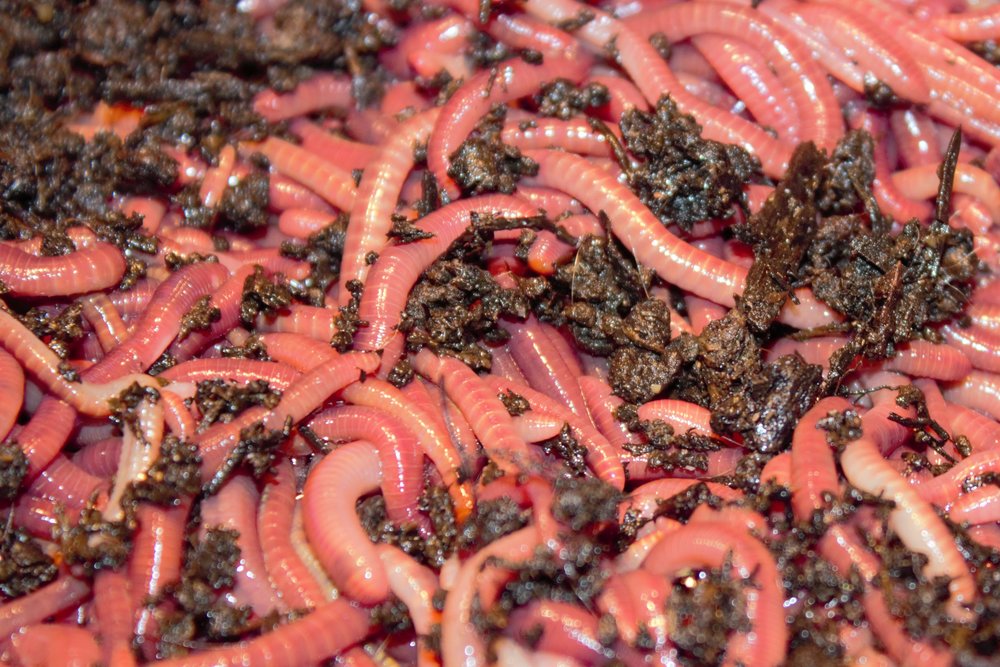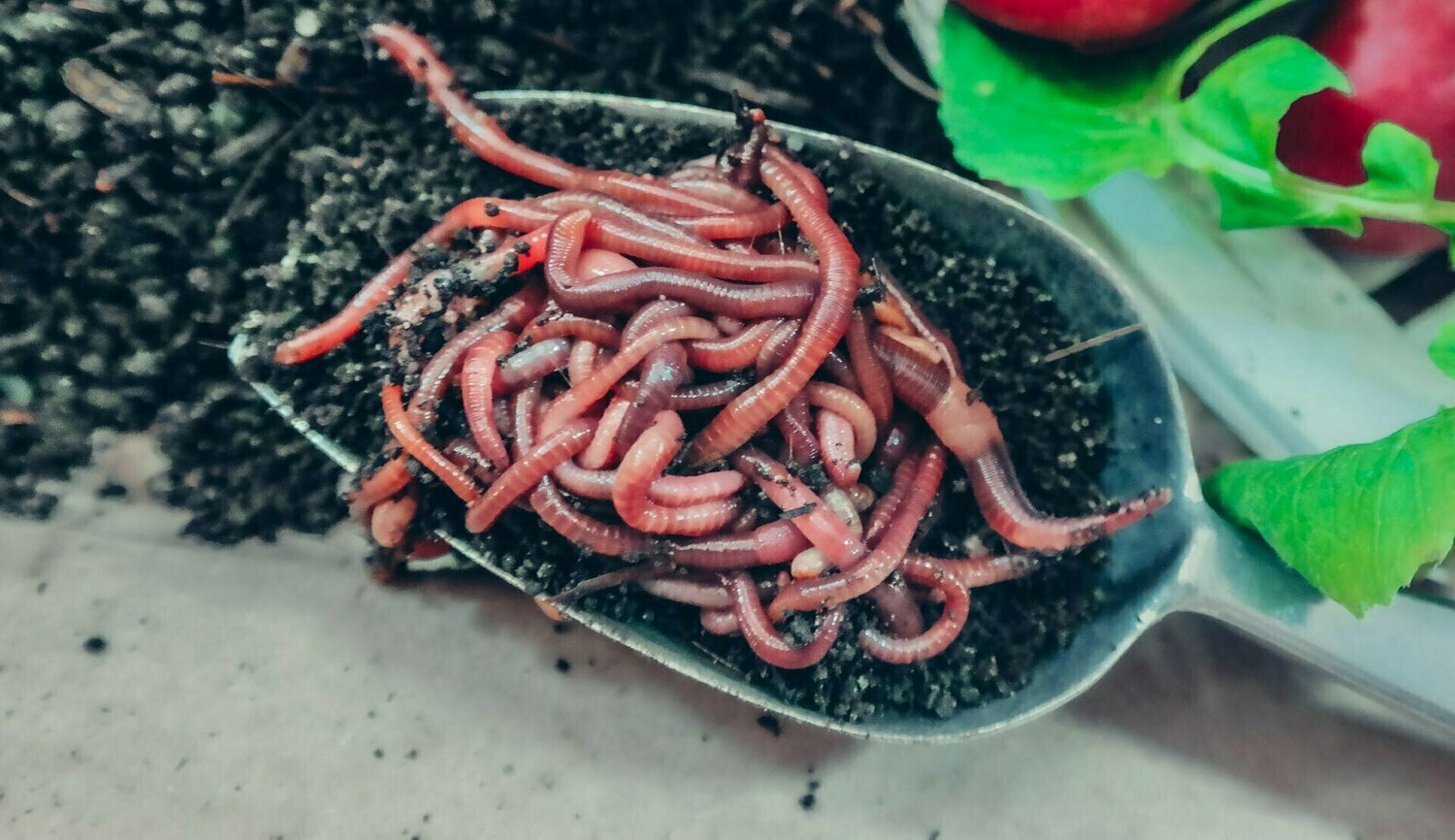Compost-ready red wigglers: How to find them
The Duty of Red Wigglers in Sustainable Gardening
The assimilation of red wigglers right into sustainable horticulture methods provides an engaging technique to enhancing dirt health and wellness and decreasing natural waste. These organisms not only transform kitchen scraps right into nutrient-dense compost through vermicomposting however also freshen the soil, advertising ideal problems for plant growth. As they damage down complicated natural materials, they actively promote a thriving microbial ecological community vital for sustainable agriculture. However, the ramifications of using red wigglers extend past mere composting; their function in shaping a much more sustainable future warrants a deeper expedition of their benefits and functional applications.
Recognizing Red Wigglers
Red wigglers, scientifically referred to as Eisenia fetida, are a types of earthworm renowned for their function in lasting horticulture and composting practices - red wigglers. These worms flourish in disintegrating raw material, making them specifically reliable in converting kitchen scraps and lawn waste into nutrient-rich garden compost. Unlike standard earthworms, red wigglers have a greater resistance for differing dampness degrees and can prosper in environments with abundant organic material
(NC Worm Farms)Typically, red wigglers are smaller sized than their earthworm counterparts, usually gauging between 3 to 4 inches in size. They possess a reddish-brown pigmentation and have a segmented body framework that aids in their burrowing and feeding tasks. These organisms are hermaphroditic, indicating each individual has both male and female reproductive body organs, which enables effective population growth under optimum conditions.
The environment preferences of red wigglers include wet, dark atmospheres abundant in organic material, such as garden compost bins or worm ranches. Their ecological function expands beyond composting; they are important in aerating the soil and promoting nutrient biking, which inevitably contributes to much healthier yard communities. red wigglers. Comprehending the biology and actions of red wigglers is vital for those looking for to implement efficient vermicomposting in lasting horticulture
Benefits of Vermicomposting
Vermicomposting offers many benefits that enhance sustainable gardening methods and add to environmental health. One of the key advantages is the transformation of organic waste into nutrient-rich garden compost, which enhances dirt framework and fertility. The spreadings produced by red wigglers are packed with useful microbes and crucial nutrients, making them an outstanding natural fertilizer.
Furthermore, vermicomposting substantially lowers land fill waste. By drawing away cooking area scraps and yard waste from landfills, this practice not only decreases methane emissions-- a potent greenhouse gas-- yet additionally promotes a round economy, where waste is repurposed as a source.
Another benefit is the improvement of dirt oygenation and water drainage (red wigglers). The burrowing task of red wigglers produces channels in the soil, allowing air and water to penetrate more conveniently, hence cultivating a much healthier origin system for plants
Additionally, vermicomposting can be done on a little scale, making it available for urban garden enthusiasts and those with minimal area. This technique encourages environmental stewardship and recognition, as people end up being much more engaged with their waste monitoring techniques. Eventually, vermicomposting represents a lasting, reliable, and environment-friendly method to gardening that profits both plants and the world.
How to Beginning Vermicomposting
Beginning your own vermicomposting system can be a rewarding undertaking that improves your sustainable horticulture methods. To start, choose an ideal container, such as a plastic container or wooden box, with great drainage and ventilation. The dimension will rely on the volume of kitchen area scraps you generate; a container of 10-14 gallons commonly is sufficient for a home.
Next, prepare the bedding product. Shredded paper, cardboard, and coconut coir are superb options, providing a comfortable habitat for the red wigglers. Go for a bed linen depth of concerning 4-6 inches, which ought to be damp however not soaked.
Once the bedding is developed, introduce your worms. Red wigglers (Eisenia fetida) are the most appropriate for composting. Beginning with around one extra pound of worms for each 2-3 pounds of kitchen scraps weekly.
Begin adding cooking area waste, preventing meat, dairy, and oily foods, as these can bring in bugs and develop smells. Routinely check the bin's wetness degrees and temperature level, ensuring it continues to be within the optimal range for worm activity. With these first steps, you'll be well on your way to creating nutrient-rich compost for your garden.
Preserving a Healthy Worm Container
A growing worm bin requires consistent care and interest to maintain an ideal atmosphere for the red wigglers. Key factors to monitor consist of dampness levels, temperature, and food supply. Preserving a moisture level similar to a wrung-out sponge is vital; excessive water can result in anaerobic conditions, while inadequate can dry out the worms.
Temperature is also important, as red wigglers grow in a range of 55 to 77 levels Fahrenheit. Extreme temperature levels can stress the worms, potentially bring about death. For that reason, putting the bin in a climate-controlled area or using protecting materials can aid regulate temperature level fluctuations.

Finally, aeration is important. Consistently turning the bed linens and using a fork or shovel can stop compaction and promote air movement, ensuring a healthy and balanced, thriving atmosphere for the red wigglers. By adhering to these practices, garden enthusiasts can maintain an effective worm bin that sustains sustainable gardening efforts.
Influence on Dirt Wellness
Enhancing dirt health and wellness with the use of red wigglers is a fundamental aspect of lasting gardening. These worms, known clinically as Eisenia fetida, play a vital role in improving soil structure and fertility. By taking in raw material, red wigglers damage down complex materials into simpler substances, a procedure understood as vermicomposting. The end item, worm castings, is abundant in necessary nutrients, including nitrogen, phosphorus, and potassium, which are important for plant development.

(red worms for composting)Researches have actually shown that soils enhanced with worm castings show boosted microbial task and enhanced fertility, bring about greater plant yields. By including red wigglers into gardening techniques, garden enthusiasts not just improve their dirt yet also contribute to an extra lasting agricultural system, stressing the interconnectedness of dirt wellness and ecological stewardship.

Verdict
In verdict, red wigglers dramatically add to lasting horticulture with their efficient vermicomposting practices. By next advertising waste reduction and promoting a circular economy, red wigglers arise as essential elements in green horticulture campaigns, highlighting their essential duty in environmental sustainability.